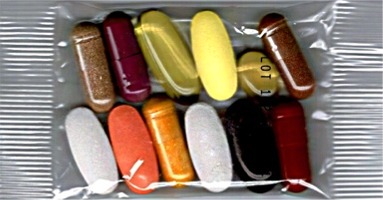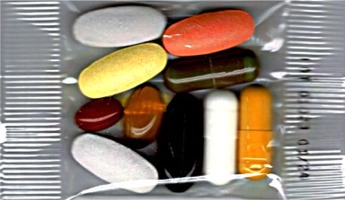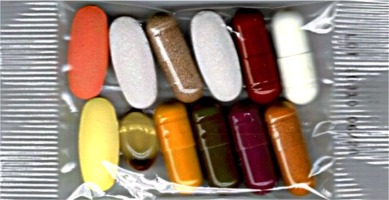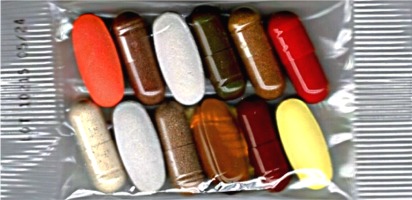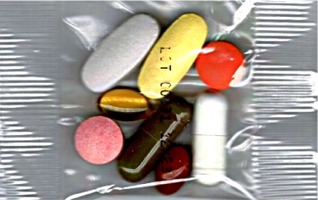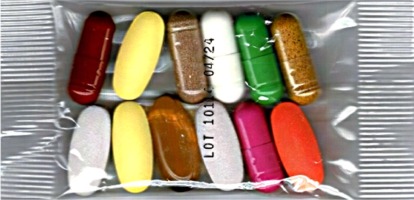Overview
Nothing refreshes like an ice-cold glass of water on a hot summer day.
Water replenishes the body's cooling system, enabling it to survive
sweltering heat or elevated body temperatures due to exercise. Sweating cools
the body by evaporating water on the surface of the skin and dispersing excess
heat.
But until the tap runs dry, most people take water for granted. Recent
contamination of municipal water systems in the Midwest due to flooding, as
well as a disease-borne outbreak in Milwaukee last (month), devastated
millions of people.
Water's Lifeline
Although deficiencies of other nutrients can be sustained for months or
even years, a person can survive only a few days without water. Indeed,
experts rank water second only to oxygen as essential for life.
In addition to offering true refreshment for the thirsty, water plays a
vital role in all bodily processes. It supplies the universal medium in which
various chemical changes of the body occur, aiding in digestion, absorption,
circulation and lubrication of body joints.
For example, as a major component of blood, water helps deliver
nutrients to body cells and removes waste to the kidneys for excretion.
Enzymes essential to digestion are also primarily water, working to break down
food so that nutrients can be absorbed in the intestine.
Water comprises about 50 to 70 percent of body weight in humans. Males
on average have a higher percentage of body water than females, because they
tend to have less body fat. The more body fat in individuals, the less water
therein. A decrease of as little as 10 percent of adult body water due to
excessive vomiting or diarrhea is considered serious, and in a young child,
could be fatal.
Average adults need about 64 ounces (eight cups) of fluid each day for
optimal health. Although experts generally advise drinking several glasses of
water a day, the need for fluid can also be met by consuming a variety of
foods and beverages.
Milk is about 87 percent water; meat ranges from 40 to 75 percent water;
and vegetables are as much as 95 percent water. Even foods normally considered
"dry" such as cereal and bread contain about eight to 35 percent
water.
Water supplies small amounts of many minerals vital for life, such as
sodium, potassium, calcium, copper and magnesium. Minerals such as calcium are
essential to bone formation and blood clotting, while magnesium is needed to
produce energy and conduct nerve impulses. Different concentrations of these
minerals determine whether water is considered hard or soft.
Hard water contains high concentrations of calcium and magnesium and is
often associated with residues or crystals in the teapot over time. The
principal mineral of soft water, on the other hand, is sodium. Soft water
dissolves soap better, leaving fewer mineral deposits, and is therefore often
viewed as more desirable.
But it's been suggested that sodium in soft water contributes to
increased incidence of high blood pressure and heart disease in some
populations. According to Jennifer Orme-Zaveleta, chief of the Environmental
Protection Agency's (EPA) drinking water health assessment section,
"Drinking water is not a significant source of sodium in the diet. You
get much more sodium from salty foods, even in areas with a relatively high
sodium concentration in the water, than from water itself"
ANR Formula One,
Two, Three, Four,
Five, Six, Seven
Heart, Alert, Maximus,
CATALOG
Water Safety
Given the indispensable nature of water to human life, it's no wonder
water safety is considered a top public health priority. Chlorination of
drinking water, which began in the early 1900s to control microbial
contamination, has been hailed by EPA as one of the most effective public
health measures of the century.
Prior to chlorination, microbial contamination of the water supply was a
major source of cholera and typhoid fever in the United States. Today, more
than 90 percent of community water supplies receive chlorinated water.
But as fewer outbreaks of waterborne infectious diseases have occurred,
concern has shifted to the presence of lead and other compounds in water. Lead
pipes and solder in older homes and buildings are major sources of lead
exposure in some populations, causing neurological and other serious health
problems.
The safety of chlorine residuals and the minor chemical byproducts in
water that directly result from the chlorination process also have come under
scrutiny.
One such byproduct, trihalomethanes (THMs), forms when chlorine reacts
with organic materials such as the remains of leaves or soil in water. Some
epidemiological studies have suggested a possible link between THMs and an
increased risk for bladder and colorectal cancer.
According to Richard J. Bull, Ph.D., professor of pharmacology and
toxicology at Washington State University, however, these findings need
additional confirmation. "The studies do not clearly define whether
cancer risks are linked to the chlorination process or to other contaminants
in surface water," said Bull. "Since the reported risk varies
according to geographic location, it's also unclear whether the health
problems are due to chlorination or some other variable."
ANR Formula One,
Two, Three, Four,
Five, Six, Seven
Heart, Alert, Maximus,
CATALOG
When the Well Runs Dry
Thirst signals the body's need for fluid. But some experts believe the
thirst mechanism cannot be considered entirely reliable, and that slight
dehydration has already occurred by the time a person becomes thirsty. For
this reason, athletes and other active persons must be sure to consume
adequate water for optimal performance.
"Drinking enough fluid is certainly key to maximum athletic
performance," said Nancy Clark, M.S., R.D., of Sports Medicine Brookline,
one of the largest athletic injury clinics in the Boston area. "But it's
even more basic than that. It can make the difference between feeling great or
drained after exercise."
At one time, athletes were advised to take salt tablets to avoid salt
depletion. However, experts now recommend consuming salty foods or sports
drinks formulated to provide sodium as well as other nutrients. Sodium
naturally present in water also helps to replace that lost through
perspiration.
ANR Formula One,
Two, Three, Four,
Five, Six, Seven
Heart, Alert, Maximus,
CATALOG
Risk vs. Benefit
While disease from untreated water is virtually nonexistent in the
United States today, other countries continue to be plagued by devastating
epidemics related to contaminated water.
In a little more than a year, the current Peruvian epidemic spread to 16
other countries in Latin America, causing about 600,000 cases of cholera and
5,000 deaths. The failure to disinfect water supplies has been repeatedly
implicated as a major contributing factor to the spread of disease.
Pan American Health Organization's Carlyle Guerra de Macedo, M.D., sums
up the risk/benefit of chlorination in this way: "Accurate models still
need to be developed to compare the risks of chlorination byproducts with the
microbial risks of not chlorinating or otherwise disinfecting water. But it is
obvious from the health statistics of Latin America that the microbial risk is
several orders of magnitude greater."
Still scientists are examining various alternatives to chlorination.
Some municipalities are using ozonation to disinfect their drinking water,
which can be costly and cannot do the job alone. "Ozone is a good
disinfectant, but it tends to break down quickly," said Orme-Zaveleta.
"Therefore, additional disinfectants such as chlorine still must be used
to protect against bacterial formation in water as it moves through the
municipal system."
EPA is working to ensure that permissible levels of chlorination
byproducts in drinking water adequately protect public health and is expected
to release new regulations by the end of the year.
"For now, we must keep in mind that we're dealing with known
benefits and only theoretical risks from the use of chlorine,"
Orme-Zaveleta concluded.
Reprinted from the International Food Information Council Foundation, 1993
Also see:
Phytochemicals: Nutrients Of
The Future
Antioxidants: An Antidote to
Aging?
Better Eating for Better Aging
Nutrition Is Key To Successful
Aging: Kidd
Latest Concepts in Nutrition
Life Long Weight Management
for Health & Happiness
10 Tips to Healthy Eating
New Perspectives on Diet and
Cancer
Upbeat on Fiber for Longer
Life & Better Health
A Refresher On Water for Long
Life & Health
Reference Guide for Vitamins
Reference Guide for Minerals
Reference Guide for Herbs
Reference Guide for Amino
Acids
Reference Guide for Special
Nutrients
Reference Guide for
Anti-Oxidants
Reference Guide for Nutritional
Greens
Reference Guide for Digestive
Nutrients
Reference Guide for Dietary
Fibers
Suggested Readings and Guide
References
ANR Formula One,
Two, Three, Four,
Five, Six, Seven
Heart, Alert, Maximus,
CATALOG
|
